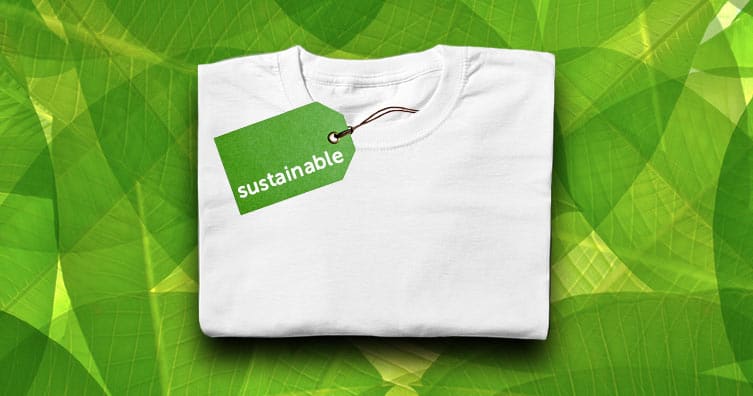Just How Cape Town Sustainable Fashion is Shaping Eco-Conscious Purchasing
Just How Cape Town Sustainable Fashion is Shaping Eco-Conscious Purchasing
Blog Article
Remain Ahead of the Contour by Discovering Ingenious Style Trends
In a sector as vibrant as style, staying ahead involves even more than just complying with present trends-- it demands an exploration of development. The merging of technology and style proclaims a brand-new age of consumer involvement.

Welcoming Smart Textiles
Recently, the style sector has actually seen a transformative change with the assimilation of wise textiles, a cutting-edge development that mixes modern technology with fabric. This evolution represents not just a blend of visual appeals and capability yet additionally a significant leap towards sustainability and personalization in vogue. Smart fabrics, likewise referred to as e-textiles, installed innovative electronic devices such as sensing units and conductive strings within the textile, allowing garments to connect with the user or the environment.
These fabrics are made to keep an eye on physical specifications, such as heart price or body temperature, supplying real-time health and wellness analytics. Beyond health applications, smart textiles are also being made use of for flexible garments, which can transform color or pattern in reaction to environmental stimulations, thus offering a vibrant style experience.
Additionally, the advancement of energy-harvesting textiles that generate power from activity or sunshine is leading the means for self-sufficient wearable technology. This advancement is appealing to ecologically mindful customers and designers intending to lower the environmental impact of style. As research study and growth in this area breakthrough, wise textiles are expected to come to be progressively common, improving the landscape of contemporary style with their multifunctional capacities.
The Rise of 3D Printing
Changing the manufacturing landscape, 3D printing has emerged as a game-changer in the apparel industry. This advanced modern technology has made it possible for designers to press the boundaries of creative thinking, creating intricate and customized garments that were formerly unimaginable. By leveraging electronic style and additive production, 3D printing helps with the production of intricate geometries and patterns, allowing developers to try out new appearances and structures.
A significant benefit of 3D printing in vogue is its ability to generate on-demand, lessening waste and reducing stock demands. This effectiveness not just optimizes production procedures but likewise permits rapid prototyping, allowing developers to bring their visions to life in a much shorter timeframe. In addition, 3D printing sustains customization to a degree unrivaled by standard techniques, providing unique designs and customized fits tailored to specific customer preferences.
The rise of 3D printing has actually also democratized fashion, making it available to emerging designers who can now fabricate top quality pieces without substantial financial investment in traditional production facilities. As innovation proceeds to development, the style industry is positioned to harness the complete capacity of 3D printing, discovering new materials and techniques that will most certainly redefine just how fashion is developed and produced.
Sustainable Style Advancements
As the garment industry comes to grips with journalism need for ecological responsibility, lasting style developments have actually emerged at the forefront of transformative modification. The expanding understanding of environmental impact has actually sustained a shift towards more eco-conscious techniques and materials. Brands and developers are now focusing on sustainability, incorporating approaches that lessen waste and lower carbon impacts.
One significant growth is the rise of circular style, which highlights recycling and upcycling to expand the lifecycle of garments. This approach not just decreases waste yet also encourages customers to adopt a more mindful strategy to clothes consumption. Furthermore, making use of sustainable materials, such as organic cotton, hemp, and recycled polyester, has actually gained traction. These products call for less water and energy during manufacturing, significantly minimizing ecological effect.
One more innovation depends on the fostering of innovative dyeing methods that use natural dyes or waterless procedures, consequently minimizing the substantial quantities of water and chemicals traditionally made use of in textile dyeing. Additionally, improvements in biotechnology have brought about the production of lab-grown leather and materials, providing cruelty-free and eco-friendly alternatives to standard products. Through these introducing initiatives, the garment industry is making purposeful strides in the direction of a much more sustainable future.

Tech-Integrated Clothing
Tech-integrated apparel represents a revolutionary fusion of style and modern technology, reshaping exactly how individuals engage with their clothes. This cutting-edge domain is marked by the inclusion of wise fabrics and embedded digital components, improving both capability and visual charm. From health and fitness trackers embedded in sports apparel to warmed coats regulated via mobile phone apps, tech-integrated clothing uses consumers unprecedented benefit and versatility.
Pioneering brands are driving this fad, concentrating on creating find garments that respond to environmental stimulations or customer commands. For circumstances, some garments can change shade or pattern in response to temperature shifts, while others integrate biometric sensing units to keep an eye on wellness metrics like heart rate or anxiety degrees. The smooth combination of innovation right into fabrics additionally extends to environmental sustainability, with efforts to develop self-cleaning materials or garments that get used to weather, thus minimizing the need for several layers.
In addition, the development of wearable innovation is not simply restricted to clothes but includes accessories like watches and eyeglasses, additional widening the scope of tech-integrated fashion. As the sector proceeds to introduce, the possibility for customization and customization in clothing grows, providing customers one-of-a-kind, tech-enhanced style experiences that provide to their specific requirements and choices.
Future of Virtual Style
In the last few years, the future of digital style has actually arised as a transformative force within the industry, leveraging advancements in electronic innovation to redefine exactly how fashion is produced, experienced, and consumed. By integrating augmented fact (AR), digital truth (VR), and 3D design devices, developers can now craft interactive and immersive experiences that go beyond standard style borders. Online fashion allows for the development of garments that exist exclusively in digital environments, using endless opportunities for technology without the restrictions of physical manufacturing.
This digital shift not just presents possibilities for innovative expression but additionally addresses sustainability issues inherent in typical fashion techniques. Cape Town Sustainable Fashion. By eliminating the demand for physical resources, digital fashion minimizes waste and minimizes carbon impacts. Furthermore, the rise of digital fashion straightens with the boosting customer demand for one-of-a-kind and individualized experiences, as online garments can be tailored and tailored to individual choices effortlessly

Conclusion
The style market's future hinge on the combination of innovative technologies and lasting techniques - Cape Town Sustainable Fashion. Smart textiles like this and tech-integrated apparel are boosting functionality, while 3D printing supplies opportunities for modification and waste reduction. Lasting fashion, through round methods and eco-friendly materials, demonstrates a commitment to ecological stewardship. Moreover, virtual fashion is poised to redefine customer communications. Adapting to these fads is essential for brand names looking for to remain appropriate and affordable in this rapidly developing landscape.
In current years, the style industry has seen a transformative change with the assimilation of smart textiles, an advanced advancement that mixes modern technology with textile.As the style sector grapples with the pushing need for environmental responsibility, sustainable fashion advancements have arised at the center of transformative change.In recent years, the future of digital style has actually arised as a transformative pressure within the market, leveraging improvements in digital technology to redefine how fashion is reference created, experienced, and taken in. The increase of online fashion lines up with the enhancing consumer need for unique and tailored experiences, as online garments can be personalized and tailored to private preferences with ease.
The fashion sector's future lies in the combination of ingenious technologies and lasting methods.
Report this page